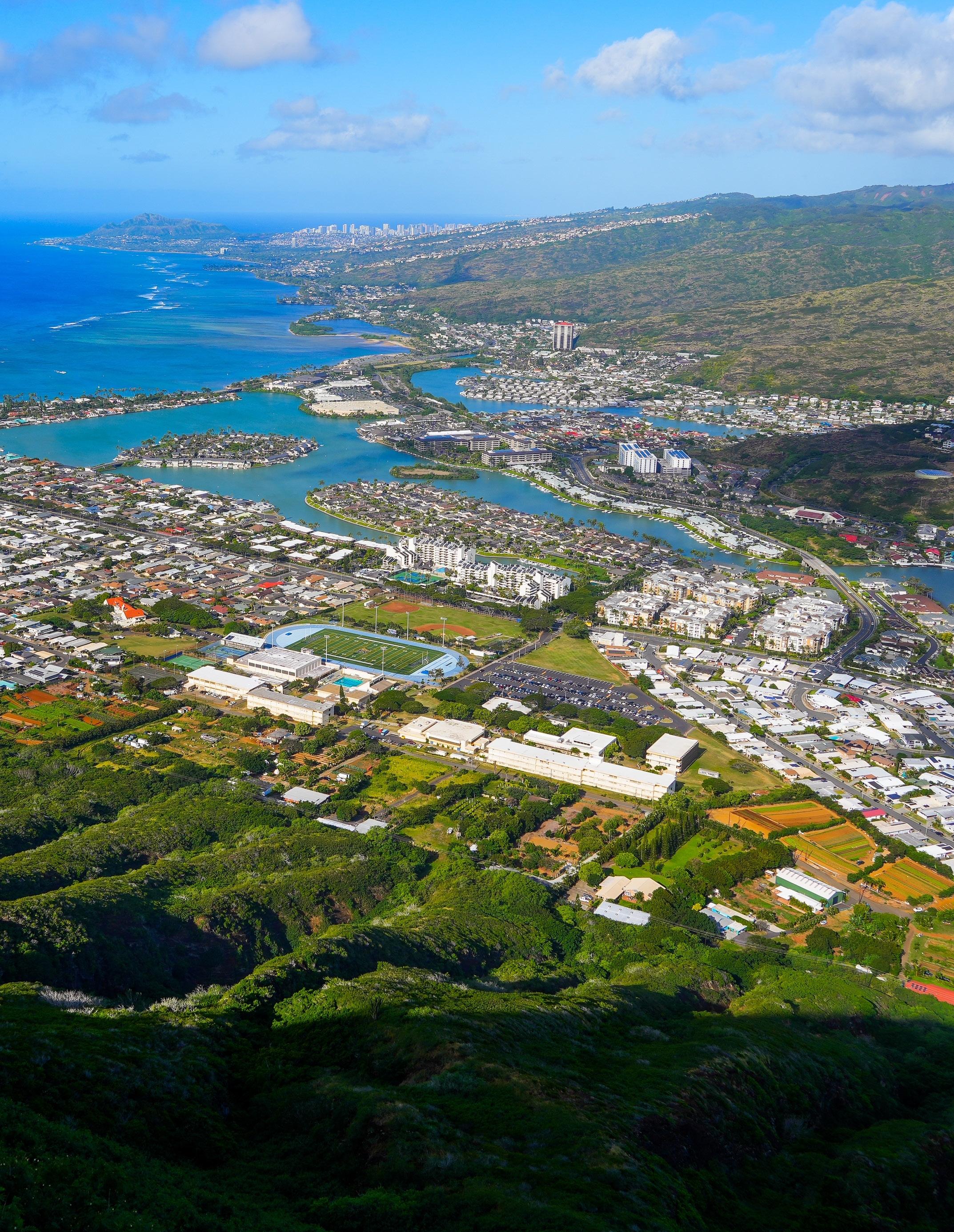HAWAI‘I GAS 2021 Sustainability Report
Doing the right thing. In the right way. At the right time. For the right reasons.



Doing the right thing. In the right way. At the right time. For the right reasons.


Our first standalone annual sustainability report describes Hawai‘i Gas’ vision and commitment to leading through sustainability and innovation to create lasting benefits for our Island ‘ohana and community.


Tracking our sustainability initiatives and reporting on our progress aligns with our promise to be transparent and forthcoming with our community, our customers and our stakeholders. We are committed to publishing an annual Sustainability Report to track our efforts to reduce our carbon footprint through innovation, collaboration and decarbonization, while balancing safety, customer affordability, reliability, equity, and sustainable growth of the business.
The report was published in December 2022 for the reporting period January 1, 2021 to December 31, 2021.
A reference to the Global Reporting Initiative (GRI) standards can be found at the end of this report.
Leading a gas company that operates on six islands in the middle of the Pacific Ocean brings unique challenges. It also offers the opportunity for innovation and collaboration. Our small size and isolated location create added complexity to our operations, but it also inspires our employees to keep operations going through hurricanes, earthquakes, tsunamis, tropical storms, and volcanic eruptions. We are part of the state’s critical infrastructure. We can’t fail. Similarly, as our state’s energy landscape evolves, we evolve with it. We have been pioneers in energy — from SNG to the use of hydrogen in our pipeline — and we continue to lean into innovative solutions to ensure service to our customers, to support Hawai‘i's climate goals and to reduce our carbon footprint.
The Hawai‘i Gas 2021 Sustainability Report — the first standalone sustainability report published by our company — shines light on our transformative work to provide affordable, resilient, and sustainable energy options while also working to reduce our company’s overall carbon footprint. Achieving carbon neutrality is our kūleana (responsibility) as an energy provider and steward of the environment and our Island home.
At Hawai‘i Gas, we are driven. We have to be. Our history, the state’s Native Hawaiian host culture, and our remote location focus us to chart a clean energy pathway unique to Hawai‘i. Our culture keeps us grounded, and honoring that culture centers everything we do to preserve our Island home. It is with that knowledge that we’ve learned, across many businesses, that what works well on the continental U.S. doesn’t necessarily translate well when imported to Hawai‘i. As a State of Islands, preserving and protecting our land, air, and water is everything.
In 2022 a new chapter in our history begins. On June 29, 2022, the Hawai‘i Public Utilities Commission (PUC) approved the acquisition of Hawai‘i Gas by Argo Infrastructure Partners (Argo) from our previous owner, Macquarie Infrastructure Holdings. Argo is an independent infrastructure fund manager, with a long-term approach to infrastructure investing and an investment philosophy that seeks to combine sound investment return with responsible and sustainable investing. Under Argo’s ownership, Hawai‘i Gas will focus on initiatives aimed at reducing greenhouse gas emissions, without jeopardizing service and reliability. The PUC’s decision paved the way for us to accelerate our renewable energy plans and continue our pioneering work with renewable natural gas and hydrogen, both critical clean energy sources

for our future. Argo fully supports our clean energy plan and will provide access to capital so that we can execute on our clean energy transformation, all while continuing to provide safe and reliable energy services to our customers.
We’re part of the state’s critical infrastructure and we take that responsibility seriously. We’re proud that over our 125-year history, our only major outage was during the Pearl Harbor attack during World War II — an intentional shut-down to mitigate damage.
Throughout our history, we have been pioneers in the gas utility industry. In the 1970s, our synthetic natural gas process was developed to meet the environmental needs of the state at the time, as well as to ensure that the state would have a reliable energy source. In recent years, we are again at the leading edge of our industry given we are currently blending both renewable natural gas and hydrogen into our fuel mix and distributing it through our pipeline.
That history of evolution and innovation defines our future, and we are committed to continued innovation, and investment in reducing our carbon footprint in order to preserve the State we call home.
Sincerely,
Alicia Moy President & CEO• Hawai‘i Gas upgraded 323,128 therms from biogas to biomethane, which is equivalent to carbon sequestered by 28,720 tree seedlings grown *
• 692,410 barrels of oil were avoided thanks to Hawai‘i Gas customers on O‘ahu using gas energy instead of electricity *
• 274 MWh of solar electricity was produced across 5 owned facilities
• 11,145 MWh produced at the Waihonu Solar facility
• Hawai‘i Gas launched company-wide DE+I training for all employees
• Hawai‘i Gas implemented an annual engagement survey to begin tracking employee satisfaction and identifying areas of opportunity and improvement
• Supported the health and safety of employees and the community during the pandemic
• 80% of employees indicate that they are proud to work at Hawai‘i Gas
• Hawai’i Gas’ senior management and its operating businesses have ESG-related and DE+I related KPIs as part of their compensation plans
• Hawai’i Gas established its first Sustainability Committee


• Hawai’i Gas signed the UN Global Compact
• The ESG senior decision maker, for both ESG and climate-related risks and opportunities, is part of the Hawai‘i Gas Board of Directors
• Hawai‘i Gas remained fully operational as an essential service to the community
• Focused on protection of employees and customers
• Supported approximately one-third of the Hawai‘i Gas workforce working from home
• Suspended disruptions to service, waived fees and assisted customers with payment plans
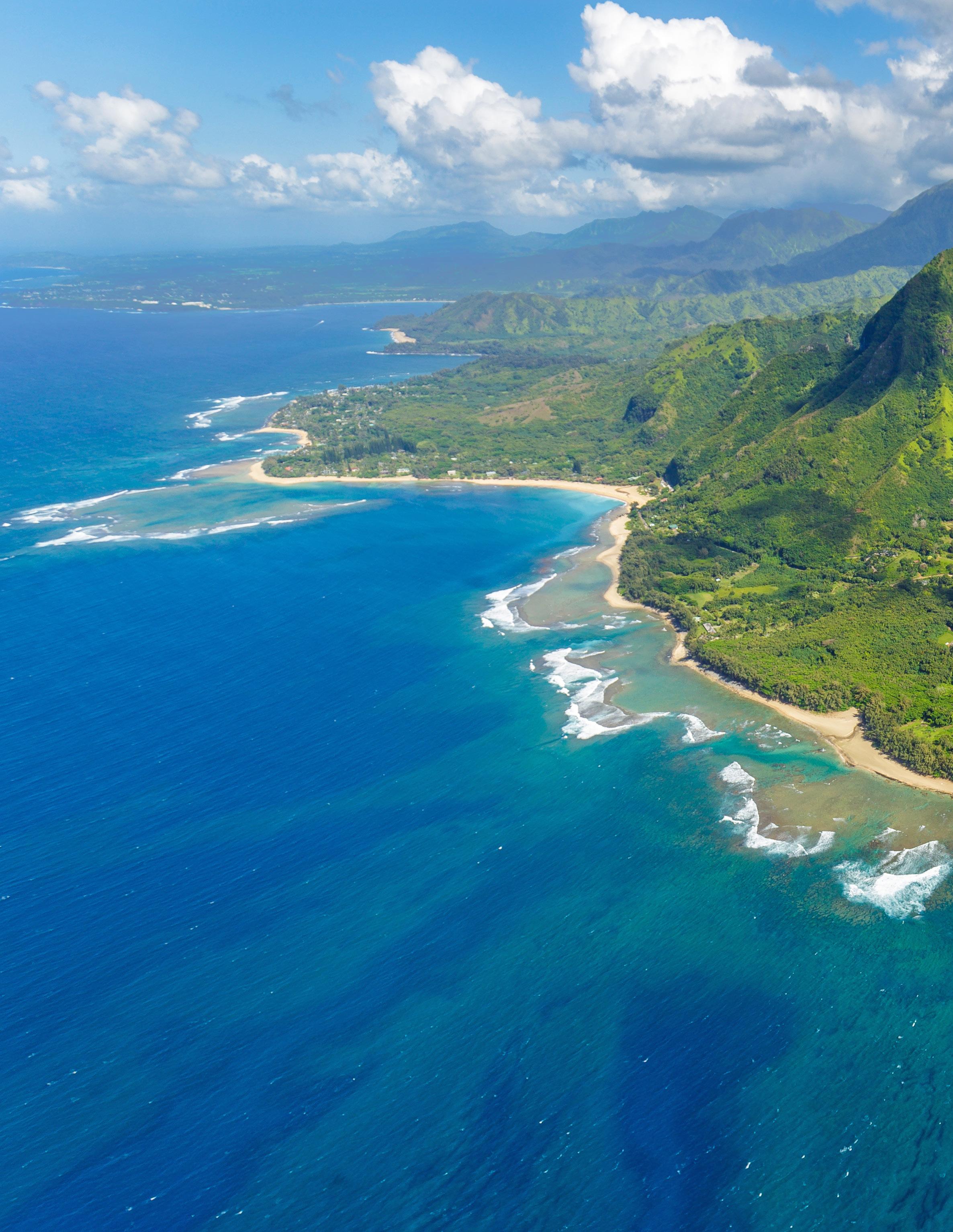
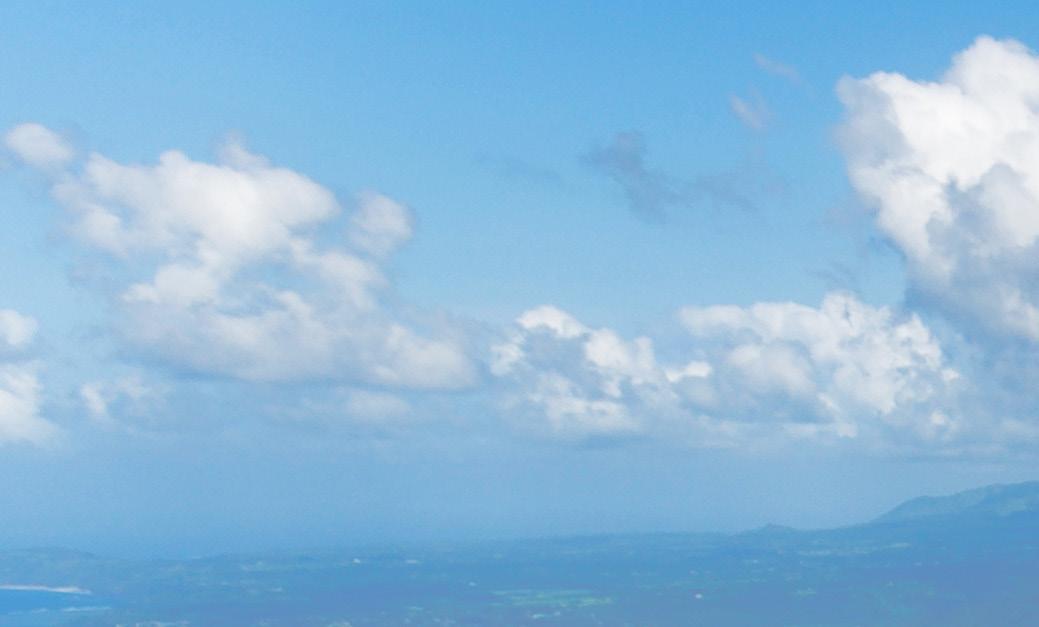









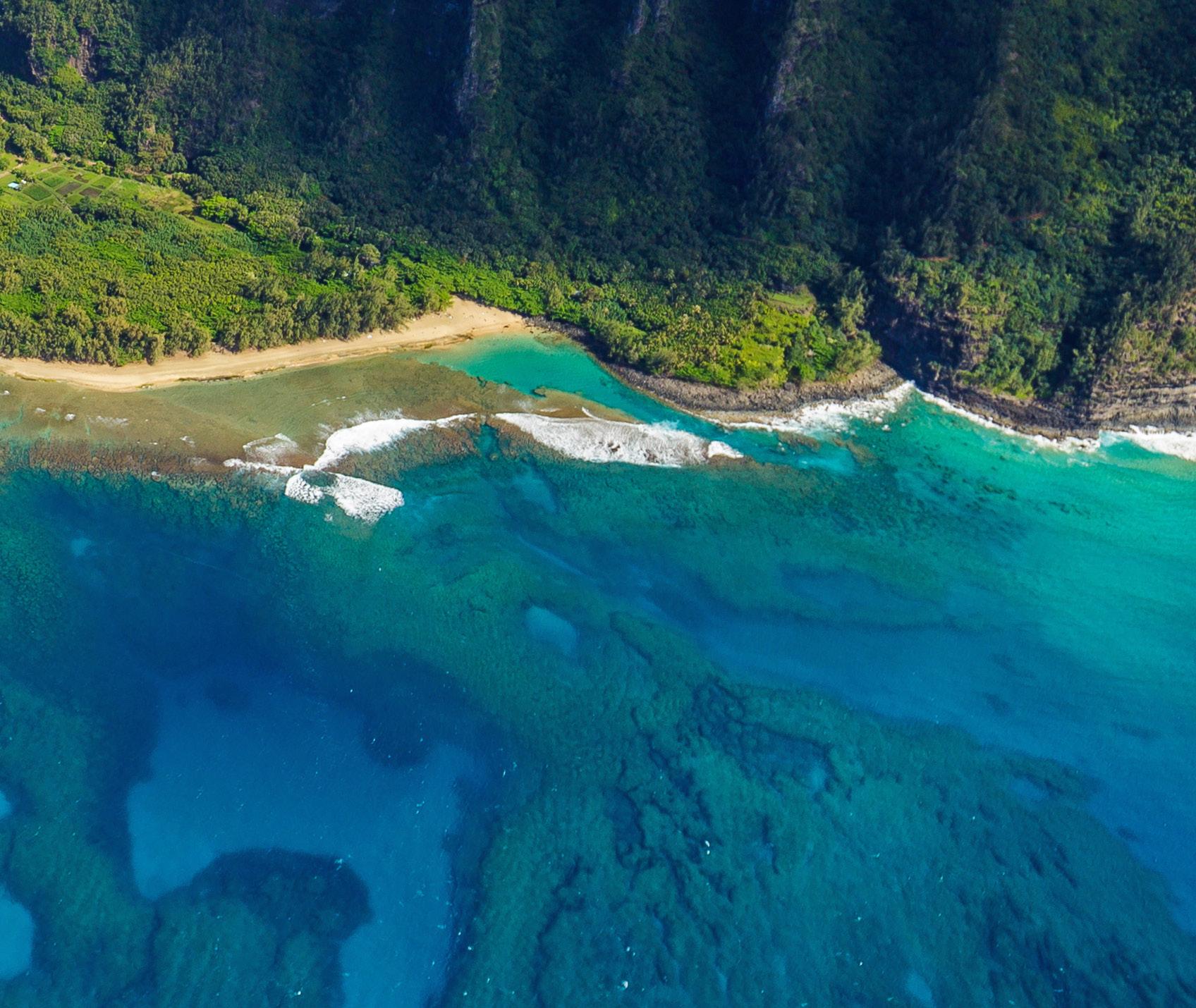
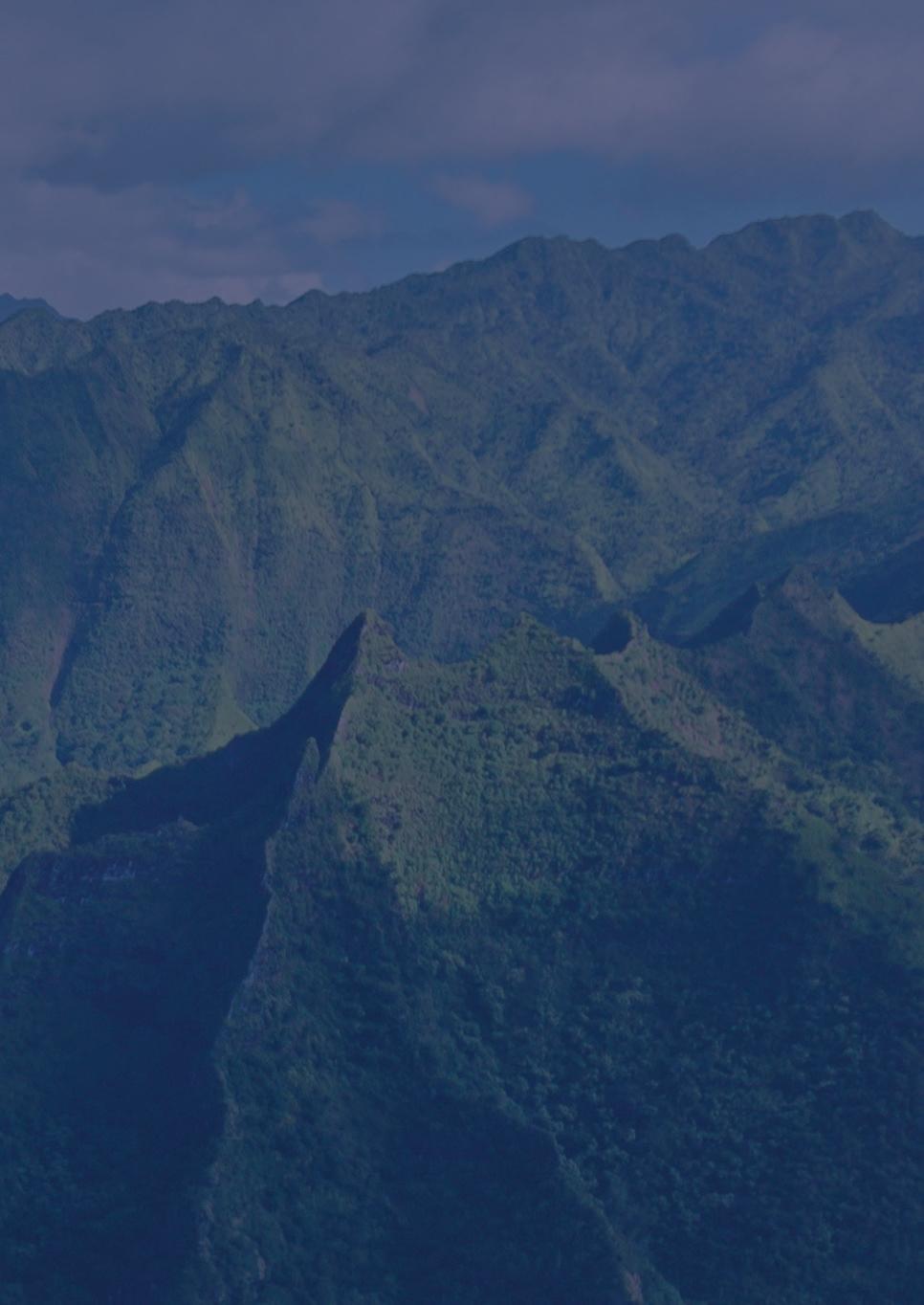


The Gas Company, LLC, doing business as Hawai‘i Gas, has been the only franchised gas utility in the State of Hawai‘i since 1904.
Headquartered in Honolulu, Hawai‘i, on the Island of O‘ahu, Hawai‘i Gas was owned by Macquarie Infrastructure Corporation up until July 2022. The company is now owned by an affiliate of Argo Infrastructure Partners.


At Hawai‘i Gas we believe in Kīnā‘ole, “doing the right thing, in the right way, at the right time, for the right reasons, the first time.”
Kīnā‘ole requires us to reduce our carbon footprint; foster energy innovation and conservation; create opportunities through diversity, equity, and inclusion; champion our people through employee engagement; support our local community; and lead with integrity.
Kīnā‘ole informs our company values:
Integrity & Respect: Act with integrity and show respect to our colleagues, customers, and community.
Teamwork & Collaboration: Share information and ideas to create solutions together.
Excellence: Commit to exceptional service and value.
Safety: Ensure the health and safety of our employees, customers, and our community. Be a good steward of the environment.
Accountability: Hold ourselves accountable and keep our promises.
Hawai‘i Gas incorporates the 10 principles of the United Nations Global Compact (UNGC) into our policies and procedures, reflecting our commitment to human rights and our responsibilities toward labor, the environment, and fighting corruption. These principles include:
• Principle 1: Businesses should support and respect the protection of internationally proclaimed human rights.
• Principle 2: Make sure that they are not complicit in human rights abuses.
• Principle 3: Businesses should uphold freedom of association and effective recognition of the right to collective bargaining.
• Principle 4: The elimination of all forms of forced and compulsory labor.
• Principle 5: The effective abolition of child labor.
• Principle 6: The elimination of discrimination in respect of employment and occupation.
• Principle 7: Businesses should support a precautionary approach to environmental challenges.
• Principle 8: Undertake initiatives to promote greater environmental responsibility.
• Principle 9: Encourage development and adoption of environmentally friendly technologies.
• Principle 10: Businesses should combat corruption in all its forms, including extortion and bribery.
Our mission is to provide reliable, affordable clean energy; to work together to find energy solutions for Hawai‘i; to grow our business through innovation and renewables; to be a preferred employer and to achieve sustainable financial performance.
Our commitment to Hawai‘i’s clean energy goals manifests itself by pursuing cost-effective, local, renewable energy projects, thus reducing Hawai‘i’s reliance on imported oil and supporting the state’s carbon neutrality goal by 2045.
We are able to distribute a blend of gas that ranges from low-carbon to zero-carbon to negativecarbon emissions through more than 1,100 miles of underground utility pipeline statewide. Our main utility system serves the southern part of O‘ahu from Campbell Industrial Park to Hawai‘i Kai and includes a blend of gas that includes Synthetic Natural Gas (SNG), Renewable Natural Gas (RNG), and hydrogen, in addition to a limited amount of imported natural gas and propane. Because our pipeline systems are underground and therefore more protected from the elements, we are resilient in the face of extreme weather events. When there is a power outage, gas energy stays on to provide energy to essential services like hospitals, fire and police departments, and other emergency management providers. In fact, the only major outage in our company’s history was an intentional shut down during the Pearl Harbor attack of World War II.
In addition, we provide propane (LPG) distribution statewide, which enables critical stability of essential functions during emergencies and severe weather. LPG is used to supply energy to emergency command
Hawai‘i Gas is rooted in conservation and ingenuity since there is no naturally occurring source of natural gas in the state. We produce SNG at our plant at Campbell Industrial Park by converting naphtha, a byproduct of oil refining, into synthetic natural gas. We operate the only SNG plant in Hawai‘i, on the Island of O‘ahu, and have been successfully making good use of this byproduct for over 47 years.
Since 2000, approximately half the hydrogen used to produce SNG has been derived from recycled water from the Honouliuli Wastewater Treatment Plant (WWTP). The water is combined with methane and other gases to produce hydrogen and additional SNG. In 2021, non-petroleum feedstock made up 50.7% of the total used to produce SNG and Renewable Natural Gas (RNG). * In 1975, we instituted carbon capture at our SNG Plant
centers, fire stations, hospitals, shelters, and other indispensable services across the state. If the electrical grid is damaged or not functioning properly, gas energy is readily available for cooking, heating water for showers or sanitation, and as fuel for backup power generators.
While Hawai‘i Gas plays a critical role in the economic vitality of Hawai‘i and the reliability and resiliency of the state. We also work diligently to enable a better future by responsibly reducing our greenhouse gas emissions. Our commitment to Hawai‘i’s clean energy goals manifests itself by pursuing cost-effective, local, renewable energy projects, thus reducing Hawai‘i’s reliance on imported oil and supporting the state’s carbon neutrality goal by 2045.
in Campbell Industrial Park, which enables us to sell the captured carbon to distributors as carbon dioxide for uses including carbonation of soda and beer and making concrete.
SNG is produced using naphtha, a waste by-product of the existing oil refining process in Hawai‘i. The production process is approximately 85% efficient*, whereas electricity generation from oil-derived fuels is approximately 32% efficient. As a result, natural gas delivers nearly three times more energy to the end-user per barrel of oil as compared to electricity produced from oil. * In 2021, an additional 692,4102 barrels of oil were avoided by the fact that Hawai‘i Gas customers on Oahu used gas energy instead of electricity, which is predominately sourced from oil. This amounts to savings of $51,818,621* based on an average cost of $74.84 per barrel of fuel oil.
We have the largest team of gas experts in Hawai‘i with more than 350 local employees serving nearly every major market segment in Hawai‘i. Our customers include residents, food services, military, hospitality, health care, education, government, agriculture, and more.

SNG is produced by first removing the sulfur in the naphtha feedstock. The naphtha is blended with hydrogen gas, heated to 700 degrees Fahrenheit and sent through a reactor vessel where a chemical reaction removes the sulfur.

The purified feedstock is then sent to a series of reactors where it is blended with super-heated steam and passed through a catalyst of nickel pellets. The result of this process is gas composed of primarily methane, hydrogen, and carbon dioxide. After the reactors, the gas flows in two separate directions.
One flow goes to a carbon dioxide absorber to remove the carbon dioxide. Then, an odorant is added so its presence can be detected if it leaks or if an appliance is turned on when it is not in use. Next, butane is added to give the SNG additional heating value so that it can properly burn in appliances. Finally, the SNG is channeled into the pipeline delivery system traveling through our transmission and distribution lines to homes and businesses along our Honolulu Utility System.
The other flow of SNG is sent into the hydrogen gas production plant. The products of this plant are hydrogen and carbon dioxide gas. The hydrogen flows back into the desulfurization step that began the whole process. The leftover carbon dioxide is captured and sent to a regenerator and prepared for sale to other companies.
RENEWABLE NATURAL GAS (RNG)
We collect, purify, and inject biogas from the Honouliuli Wastewater Treatment Plant into the utility pipeline system on O‘ahu. We are pursuing additional sources of RNG including from other wastewater treatment plants, landfill sites, and locally produced biomass.
As part of our SNG production process, we have the highest percentage of hydrogen blending in our pipeline transmission and distribution system of any gas utility we are aware of today.
LPG is a generic name for a mixture of hydrocarbon gases, typically propane and butane. Because it liquefies at relatively low pressure and ambient temperatures, LPG can be transported efficiently and stored in cylinders or tanks. We operate the state’s largest LPG distribution and storage network. Thanks to its portability, propane increases the State’s energy resilience by providing a backup source of energy during natural
disasters. Propane is also an approved clean alternative fuel under the Clean Air Act and is used in certain rural areas of O‘ahu and on the neighboring islands where there is little or no access to the utility natural gas distribution system.

LNG is transported to Hawai‘i in conventional intermodule cryogenic containers from the continental U.S. Hawai‘i Gas is authorized by the PUC to displace up to 30% of its SNG production with LNG which can also be from renewable sources to improve the diversity of supply to utility customers on O‘ahu.
We are also committed to diversification of our products and, through our sister companies, we own and manage a 6.5 MW solar farm and a 1.1 MW cogeneration facility on O‘ahu.
The energy sector has increasingly become the focal point of state and global attention, and energy companies such as Hawai‘i Gas are a critical component in the transition to cleaner fuels and reducing carbon emissions. At Hawai‘i Gas, we know the importance of constantly looking for innovative new ways to meet this changing landscape, and more importantly, leading the way to support the State’s goal of carbon neutrality by 2045. To grow as a sustainable business, we have developed three main strategic priorities to ensure we can adapt and innovate to do our part to reduce the impacts of climate change for our Island ‘ohana and communities while providing excellent customer service with an engaged and thriving workforce.
We empower our leaders to make decisions and solve problems in line with our mission. We aim to train and support them to operate effectively in a fast-changing environment and to promote a culture of safety and compliance.
We continually look for ways to improve our operations and provide greater customer value, while managing risk, and ensure regulatory compliance. We aim to streamline and standardize our processes so that we can be flexible and fast, providing a better experience for our customers and employees.
We take action to reduce our carbon footprint, support carbon neutrality goals (via RNG and hydrogen) and establish Hawai‘i Gas as a leader in clean energy solutions. We strive to bring employees and external stakeholders, including customers, along on our clean energy journey.
Hawai‘i Gas has developed a Clean Energy Plan with a goal of balancing the need to provide affordable, resilient, and sustainable energy options for Hawai‘i with the responsibility of reducing our company’s overall carbon footprint. We believe that reaching carbon neutrality by 2045 or sooner is achievable through energy efficiency, decarbonization, diversification, and carbon offset programs. Hawai‘i Gas is working toward that future and understands that achieving carbon neutrality is our responsibility as an energy provider and steward of the environment.
In partnership with the City and County of Honolulu, we developed the first-in-the-state renewable natural gas facility. At the City and County of Honolulu’s Wastewater Treatment Plant on O‘ahu, we capture and process biogas to create RNG. The RNG facility produces up to 800,000 therms of energy per year, enough gas for more than 6,000 homes.* Additionally, since 2018, the City and County of Honolulu generated approximately $1.85 million of revenue by selling the captured biogas to Hawai‘i Gas.
RNG is considered a carbon-neutral fuel or carbon negative fuel. It is considered carbon-neutral when it comes from organic sources that once absorbed carbon dioxide from the atmosphere during photosynthesis. RNG is considered carbon negative when it is produced from organic waste that would otherwise decay and emit methane emissions to the atmosphere, i.e., capturing more greenhouse gases than it emits.
In May of 2021, the Hawai‘i Natural Energy Institute of the University of Hawai‘i issued a study exploring local production resources for RNG, which is a first step in cataloging the potential opportunities in the state. Because Hawai‘i Gas can provide reliable and safe renewable natural gas service through our underground utility pipeline whenever and wherever it’s needed, we are assessing the potential for biogas services on O‘ahu and are actively pursuing new RNG projects with a priority on locally-produced RNG.
Renewable natural gas is gas energy from sustainable sources. Hawai‘i Gas can make renewable natural gas by taking an existing local waste stream and purifying it into usable gas energy for homes and businesses. The biogas can come from a variety of sources including wastewater treatment facilities, landfills, and crop residuals.
“Ensuring that all residents and businesses have access to affordable, renewable, and reliable energy is a priority at Hawai‘i Gas.”
Kevin Nishimura, Vice-President of Operations
As part of our process of making SNG on O‘ahu, we have been blending an average of 10%-12% hydrogen (up to a maximum of 15%). We are assessing ways to further increase the proportion of hydrogen in our system.
Blending hydrogen into the existing natural gas infrastructure has benefits for energy storage, resiliency, and emissions reductions. Hydrogen produced from renewable resources can be mixed into utility gas pipelines, and the blend can then be used by conventional end users to generate power. However, the long-term impact of hydrogen on materials and equipment is not well understood, which makes it challenging for utilities and industries to plan around blending at a large scale.
Hawai‘i Gas is a part of a study led by National Renewable Energy Lab (NREL) which aims to address technical barriers to blending hydrogen in natural gas pipelines. Key aspects of HyBlend include materials compatibility R&D, techno-economic analysis, and life cycle analysis that will inform the development of publicly accessible tools that characterize the opportunities, costs, and risks of blending. The HyBlend team comprises six national laboratories: NREL, Sandia National Laboratories (SNL), Pacific Northwest National Laboratory (PNNL), Oak Ridge National Laboratory (ORNL), Argonne National
As a pioneer in hydrogen blending in gas utility systems, we share information and resources with selected partners to advance the use of hydrogen in utility systems worldwide. We are collaborating with Cadent, the largest gas distribution network in the United Kingdom, to support the use of hydrogen as an energy source for the gas utility of the future.
Recently, we have embarked on several hydrogen research and development projects to try to overcome the technical challenges of increasing the proportion of hydrogen in our supply mix.
Laboratory (ANL), and the National Energy Technology Laboratory (NETL) and more than 20 participants from industry and academia. This two-year project was selected by the U.S. Department of Energy’s Hydrogen and Fuel Cell Technologies Office (HFTO) in the Office of Energy Efficiency and Renewable Energy (EERE) through the H2@Scale 2020 CRADA Call. The team will receive more than $10 million of funding from EERE, with an additional $4 to $5 million in contributions from participants.

We are committed to doing our part to help the State achieve its goal of carbon neutrality by 2045 and we are taking steps to reduce our GHG emissions. Reducing our carbon footprint is an essential step on the road to decarbonization. We report our GHG emissions to the U.S. Environmental Protection Agency and have undertaken several initiatives to reduce our energy consumption through efficiency measures and on-site renewable energy. We engaged ICF International, a global advisory and digital services provider, to calculate greenhouse gas (GHG) emissions from our company’s operations under Scope 1 and 2, as set out in the Kyoto Protocol. ICF calculated our emissions totals for 2019 to provide a baseline for assessing our progress toward carbon neutrality. This exercise covered emissions of all gases included in the Kyoto Protocol: carbon dioxide (CO2), methane (CH4), nitrous oxide (N2O), hydrofluorocarbons (HFCs), perfluorocarbons (PFCs), sulfur hexafluoride (SF6), and nitrogen trifluoride (NF3). Our operations do not emit PFCs, SF6, or NF3. In June 2021, we completed our company-wide Greenhouse Gas Inventory, measuring against the 2019 baseline for our Scope 1 and Scope 2 emissions.

In 2021, we set up an internal Sustainability Committee to identify material ESG challenges and opportunities and to review the GRESB results with departments across the company.

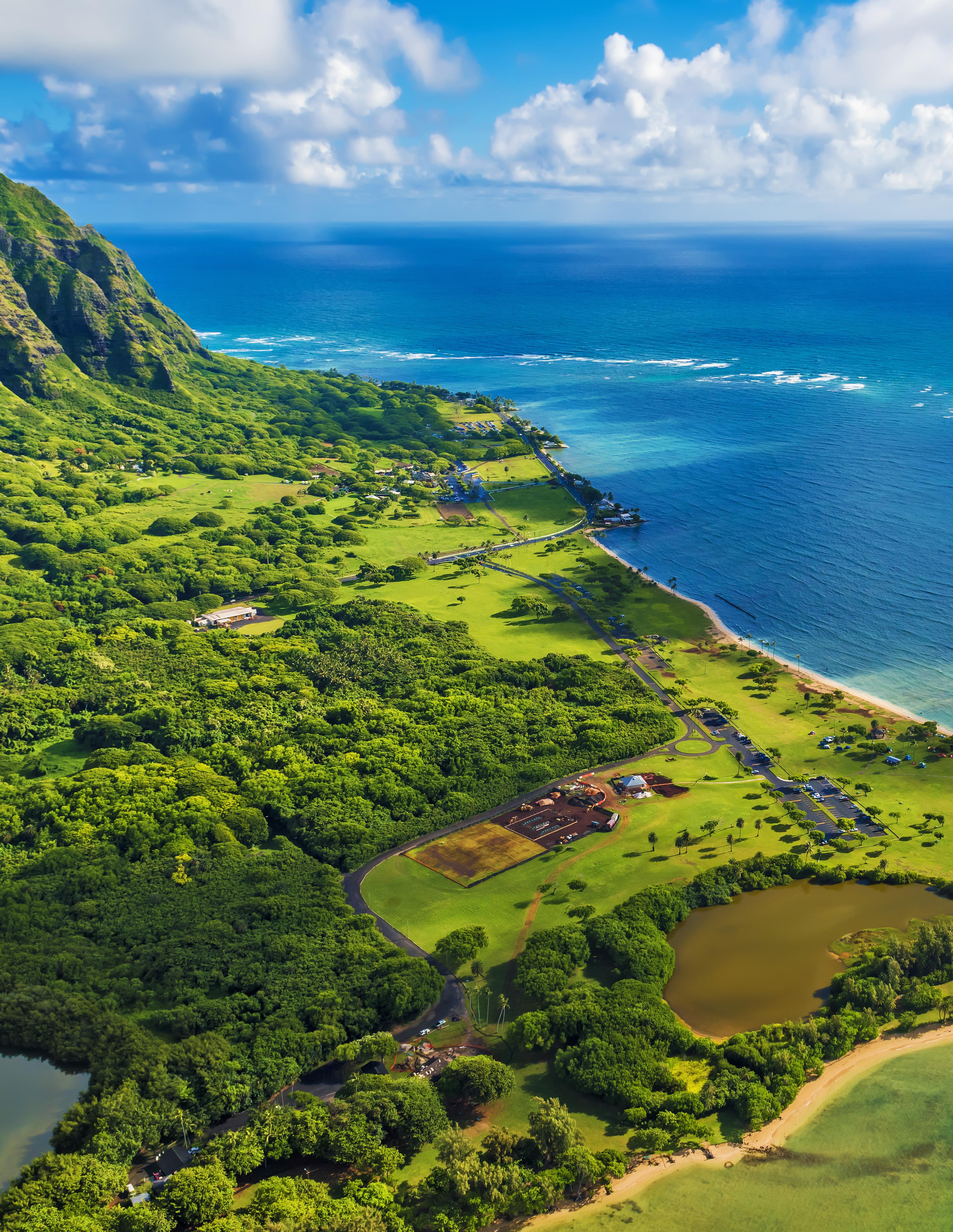
In 2021, members of our Sustainability Committee conducted a materiality assessment to identify topics that have significant social, economic, and environmental impacts on Hawai‘i Gas.
We looked at potential risks in six categories related to finance, information technology, people management, operations, legal requirements, and strategic decisions. We assessed each risk based on its likelihood of occurrence and the magnitude of impact that it would have on Hawai‘i Gas’ stakeholders. We used the GRESB framework and materiality scoring tool to identify the ESG risks
and opportunities relevant to our business and stakeholders and where to focus our ESG program initiatives as high, medium, or low relevance.
This enabled the company to identify the most material ESG issues, and develop plans to mitigate environmental risks and improve ESG performance.
Following our commitment to Environment, Social, and Governance reporting and transparency, we reported our ESG metrics using the GRESB Assessment in 2020, and 2021. GRESB’s mission is to assess and benchmark the ESG performance of real assets, providing standardized and validated data to the capital markets. GRESB Assessments are guided by what investors and the industry consider to be the most material sustainability issues for real asset investments and are aligned with international reporting frameworks, such as GRI, PRI, SASB, DJSI, TCFD recommendations; the Paris Climate Agreement; UN SDGs; and region and country-specific disclosure guidelines and regulations.
Hawai‘i Gas significantly improved our GRESB scoring from 60 in 2020 to 68 in 2021. We are committed to continual ESG improvement across the company, supported by our new owner, Argo Infrastructure, who has participated in GRESB assessments for seven years and is committed to continuing to do so.
Over the last several years, we measured our annual environmental, social, and governance performance and established a series of KPIs that allow us to track our performance. We monitor and review these KPIs regularly.
As a company, we are committed to improving our energy efficiency and usage. We monitor our energy consumption across our operations to understand our energy consumption patterns and set appropriate benchmarks to reduce our usage. The goal is to better understand our consumption patterns and set appropriate benchmarks to further reduce our usage.
As part of our work to decarbonize our operations, we took part in the Hawai‘i Energy Incentive Program and completed an energy efficiency review at several company-owned facilities to identify areas for improvement and set out a plan for future implementation of green technology. Older lighting was replaced with energy-efficient LED lights and solar PV systems were installed at five offices across the state. In 2021, we avoided the use of over 4,000 kWh of electricity by replacing 80% of our old lighting with LEDs.
Our Kamake‘e office is part of Hawai‘i Green Growth’s Green Your Business initiative which aims to measure and improve energy efficiency in industrial facilities and offices through upgrades, employee education, and operational and behavioral changes. Since 2014, the Kamake‘e Office has reduced its energy usage from 551,253 kWh per year to 286,132 kWh in 2021, which is a more than 40% reduction.
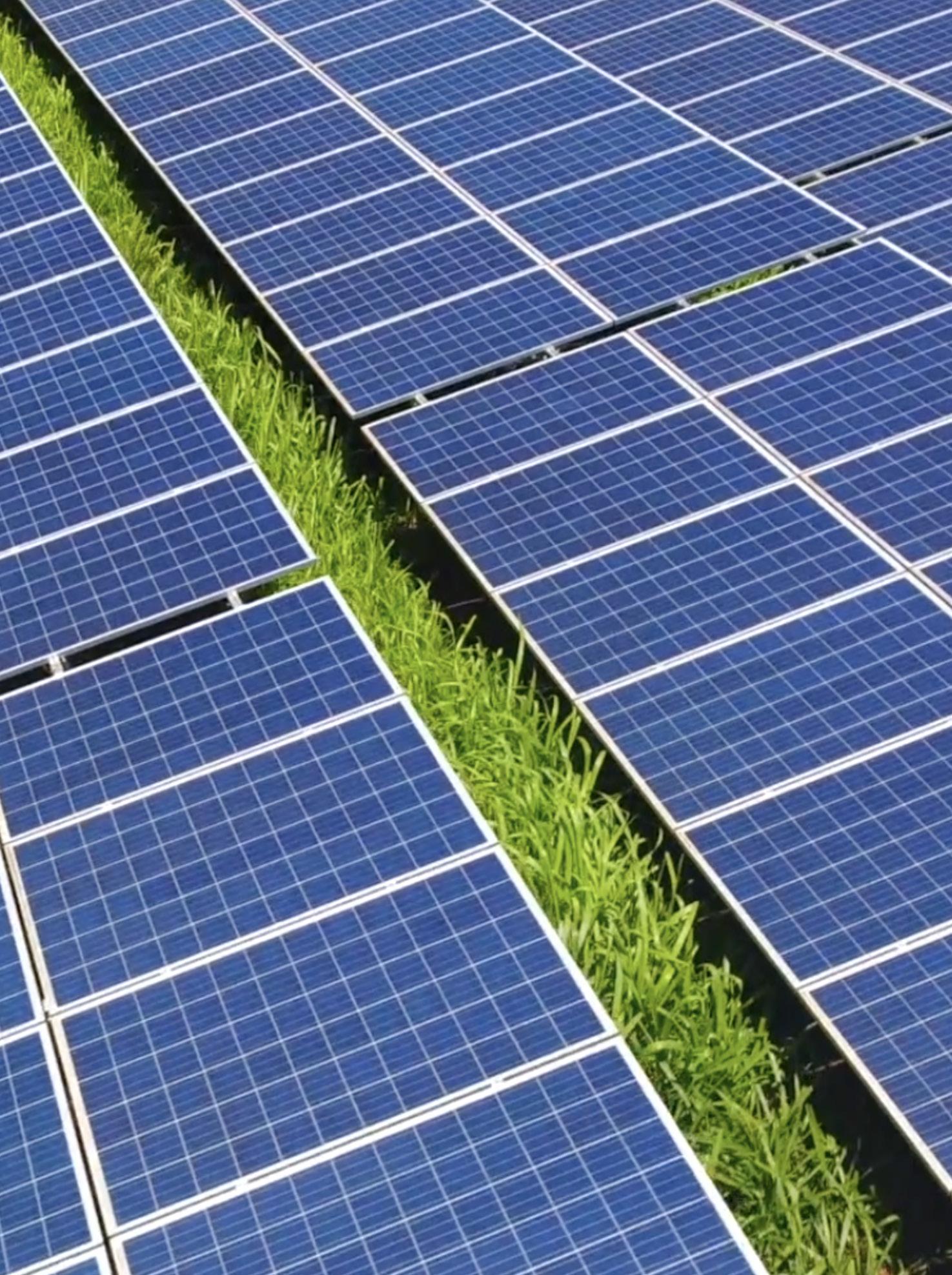
Our Waihonu Solar Farm on O‘ahu produces 6.5 MW, enough to power approximately 1,000 homes. It was commissioned in 2016 and consists of 26,232 solar modules and 13 inverters and is situated on 12 acres of the campus at Honbushin International Center in Mililani.*


We are continually examining multiple ways of reducing electricity consumption across our facilities with a variety of conservation measures such as using variable frequency drives (VFDs) that limit excess energy usage for pumps and motors, installing LED lighting indoors and out, and fitting solar panels. These steps could save an additional 10%-15% of our annual energy consumption.
We implemented carbon capture at our SNG Plant in Campbell Industrial Park and sell the captured carbon to distributors for uses including carbonation of soda and beer and making concrete.
We have unique opportunities with respect to carbon offsets and other carbon reduction frameworks as new technologies develop in these areas.
82,286
Hawai‘i Gas has five sites equipped with solar panels which generated a combined 274 MWh of energy in 2021. These are located at our Kamake‘e, Kona, Hilo, Maui, and Kaua‘i offices.
Statewide Total 274,194
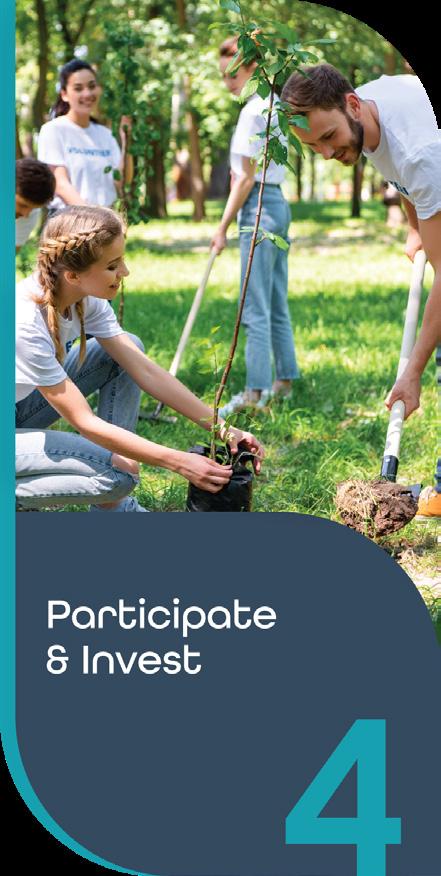
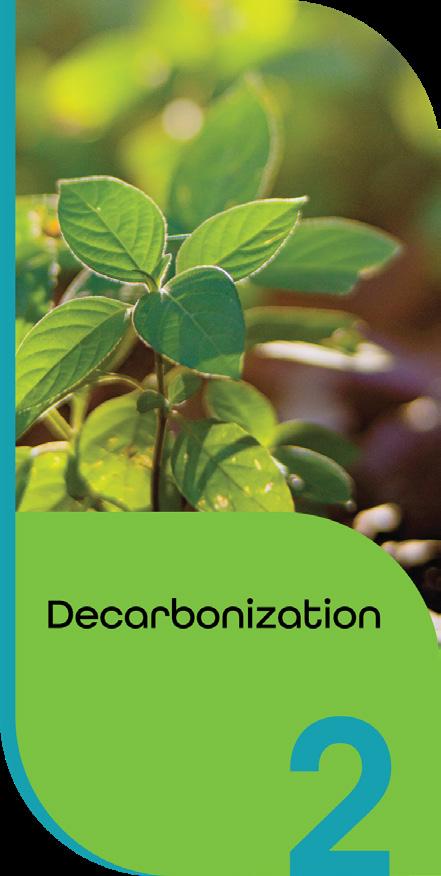
Our goal is to balance the need to provide resilient and sustainable energy options with the responsibility of reducing our company’s overall carbon footprint.


We also encourage and help our customers reduce their energy consumption and carbon footprint by providing good energy tips on our website and in our Good Energy Connections Newsletter.* The 2017 Hawai‘i State GHG Emissions Report published in April 2021, revealed that the energy sector accounted for more than 85% of all emissions in the state. Stationary combustion and transportation account for more than 95% of all emissions from the energy sector. Therefore, of the state’s total GHG emissions, petroleum and natural gas systems are among the smallest contributors, accounting for approximately 0.4% (Hawai‘i Gas’ share is 0.3%). Nonetheless,
we can play a key role in enabling the energy transition by further developing new forms of renewable energy production such as hydrogen and RNG from new sources like biomass and organic waste.
In 2021, Hawai‘i Gas emitted 61,361 metric tons of carbon dioxide equivalent (tCO2e). Scope 1 direct emissions from sources owned or controlled by Hawai‘i Gas accounted for 57,746 tCO2e and Scope 2 indirect emissions from electricity, steam, heating, or cooling purchased for use in Hawai‘i Gas’ activities accounted for 3,615 tCO2e.

Our RNG plant allows us to capture biogas and purify it so that it can be blended into the pipeline and used as a clean source of energy instead of being flared. This results in avoided emissions of 1,406 tCO2e — which is equivalent to CO2 emissions from 177 homes energy use for one year.**

In accordance with local environmental regulations, we use equipment and processes to limit emissions and meet regulatory requirements to limit harmful particles and substances from being released into the atmosphere.
Hawaii Gas is committed to doing our part to help the State achieve its goal of carbon neutrality by 2045 and is taking steps to reduce our GHG emissions.
For example, Hawai‘i Gas is repairing and replacing steel pipelines in accordance with the U.S. Department of Transportation’s Pipeline and Hazardous Materials Safety Administration guidelines to minimize the potential for methane releases.


We are a small-quantity hazardous waste generator, with most of our hazardous waste generated from equipment maintenance and repair tasks. We track hazardous waste production across the full operational cycle at our SNG plant and all our employees abide by internal waste management procedures and applicable regulatory requirements. This allows us to ensure safe handling and disposal of hazardous waste to maintain the health and safety of our employees, but also to protect the natural environment in which we operate.
Our SNG plant uses reclaimed and recycled water from the City and County of Honolulu’s Honouliuli Wastewater Treatment Plant on O‘ahu. From 2019 to 2020, in part due to the slowdown in our activities during the COVID-19 pandemic, we experienced a decrease in total water discharge. However, an uptake in our activity as the State reopened resulted in an increase in total water discharge from 2020 to 2021 of 17%. WATER
“Making sure every employee gets home to their family every day is our top priority here at Hawai‘i Gas, and we achieve that by following proper safety procedures and protocols every day,” says Zoe Williams, Environment Health & Safety Manager. "We know our employees are doing a great job making sure their workplace is safe. The Excellence in Safety Award is our chance to recognize our safety leaders who strive to keep our Hawai‘i Gas ‘ohana, our customers, and our community safe.”




Prior to his retirement in 2021, Mel Andrade rejuvenated the Hawai‘i Gas Driver Improvement Program by sharing his driver training expertise at all sites that needed to complete the program. Mel demonstrated safety leadership and offered drivers the benefits of his many years of experience. All his classes received overwhelmingly positive feedback and renewed his colleagues’ enthusiasm for safe driving.
This award honors employees who have displayed exemplary dedication to safety and proper training of the workforce. Winners are nominated by their peers.
Our 2021 winner, Quincey (Duke) Waiki, working as a Service Technician in the Hilo office, entered an apartment where gas was leaking. He ensured no one was trapped inside, then stopped the leak and ventilated the apartment. When he returned with the apartment manager to isolate the stove that was the source of the leak, the apartment manager received an electric shock. Realizing the stove was electrified, Duke quickly pulled the apartment manager to safety, likely preventing her from being electrocuted. He then ensured the power was shut off and finished making repairs to the gas line.


Zoe Williams became Hawai‘i Gas’ “Flu Manager” during the pandemic, collating knowledge and information as the situation developed, answering questions, keeping the company leadership informed, guiding departmental managers on how to respond, as well as offering care, support, and advice to those who called on her. By agreeing to be on call 24/7, Zoe demonstrated her care and concern for her colleagues.

Our Environmental Health and Safety (EHS) Department conducts a wide range of Occupational Health & Safety training each year and the EHS Department also conducts internal safety and compliance audits to ensure that safety policies and compliance procedures are working effectively.
Process Safety Management (PSM) and Risk Management Program (RMP) regulations apply at our SNG facility. A dedicated safety management professional works on

site at the facility to assist in implementing a robust set of procedures and requirements to ensure the safety of our plant operators and the surrounding community.
At Hawai‘i Gas, we use several common lagging (ORIR, LTIFR, DLFR) and leading (Near Misses, Safety Observations, Safety Training Completed) safety metrics to evaluate the safety performance of our business. The primary safety metrics are shown in the table below.
Hawai‘i is well known as a “melting pot” of cultures, all living and working together in an Island ‘ohana. As a proud Island company, we value diversity, equity, and inclusion (DE+I) because we know it drives our company and the world forward. All employees and contractors are encouraged to build a

represented in the commitments we make as a business to address gaps and challenges that may arise. Our DE+I policies and procedures are designed to have a positive impact on our employees and their families and to serve the greater good of the communities in which we live and work.
We are committed to developing and advancing a company culture that puts diversity, equity, and inclusion at the forefront of our daily practices and actions. We cultivate an inclusive workplace where everyone feels welcome, heard, included, respected, and able to express their true self.
We have implemented the UN Global Compact (UNGC) principles on Human Rights with regard to DE+I. These include:
i. Raising awareness among our employees, starting with our Executive Leadership Team.
collegial atmosphere in each of our offices, free of discrimination and harassment of any kind. Values such as respect, teamwork, integrity, fairness, and honesty are emphasized as an intrinsic part of our corporate culture.
A diverse, equitable and inclusive workplace is fundamental to our vision, mission, and values. It is
ii. Implementing policies and procedures supporting human rights. Requiring all employees to act in an ethical manner as responsible corporate citizens.
iii. Implementing policies to prohibit discrimination in hiring practices and to promote equal access to promotion and advancement.
“Fostering Diversity & Inclusion is critical to our success. It’s how we shed light and good energy into the future success of our company by including and appreciating everyone’s ideas, views, and experiences.”
Jenny Tanaka, Sr. Manager, Organization & Talent Development"
To measure the outcomes of our actions, we provide annual compliance training for our employees and carry out an annual engagement survey to track employee engagement. We also monitor and respond to employee complaints.
We track DE+I metrics including the gender, age, and ethnicity of our employees and have aligned DE+I principles with our performance indicators, including the KPIs that apply to the Executive Leadership Team.
In 2021, we conducted a DE+I engagement survey to understand our employees’ views on company culture, leadership, resources, and support. The survey had a 75% participation rate with 258 respondents.
The majority of our employees:
• Believe a diverse workforce improves business performance.
• Feel comfortable being themselves at work.
• Believe that people of all cultures and backgrounds are respected and valued at Hawai‘i Gas.
Areas of improvement were also identified and addressed. Half of our employees stated that:
• They felt that senior leaders demonstrate commitment to creating a diverse and inclusive workplace.
• Hawai‘i Gas provides adequate training and support on diversity and inclusion.
Hawai‘i Gas used the feedback from employees to develop and set DE+I priorities and goals.
Our leadership team is committed to leading change around diversity, equity, and inclusion. In 2021, the company identified and implemented initiatives around three main focal points:
CREATING A CULTURE OF DIVERSITY, EQUITY, AND INCLUSION BY:
• Creating DE+I brand and logo.
• Establishing an internal DE+I committee.
• Launching a communications campaign including monthly cultural memos.
• Investing in and launching an engagement survey and pulse survey.
• Conducting DE+I focus groups.
• Analyzing results with leadership to gain leadership commitment and accountability.
INVESTING IN & DEVELOPING OUR PEOPLE BY:
• Investing in learning resources and programs to build awareness and learning opportunities
• Partnering with Hawai‘i Gas’s women’s network to conduct Lunch & Learn sessions to invest in and engage with our female employees.
• Utilizing DE+I case studies to inform recruitment campaign to be launched in 2022.
• Organizing social media and recruitment marketing campaigns spotlighting women in non-traditional roles.
CONNECTING WITH OUR LOCAL COMMUNITIES & CUSTOMERS BY:
• Updating our Charitable Contributions Policy to specifically incorporate ESG and DE+I principles.
2021 DE+I
Our DE+I goals are focused on three principles
We gather feedback from people across the organization with different characteristics, backgrounds, and experiences to help us understand our employees’ perspectives and experiences. This includes conducting surveys, focus groups, conversations, pulse studies, and observations. Doing this helps us develop plans to improve key drivers of engagement such as communication with employees, trust in leadership, and change management. Over the next three years, we aim to increase approval scores and increase participation in annual and pulse surveys.
We are committed to building a talent pipeline that ensures a diverse, equitable, and inclusive workforce at all levels of the organization by integrating DE+I into our recruitment practices and following total rewards and other talent management initiatives.
We aim to increase DE+I Awareness scores across all levels of the organization by using learning and leadership development programs both internally and externally. We will provide specific training on community and workplace inequities. We will develop a recruitment/hiring strategy to attract more female applicants, in particular roles traditionally occupied by men, and to ensure more women reach senior leadership positions.

We will build partnerships to create business opportunities in our communities. We encourage employees to get involved in community outreach and volunteer programs, identify opportunities to establish community relationships that support under-represented communities and non-profit charities, and form closer connections with organizations that share our commitment to DE+I.
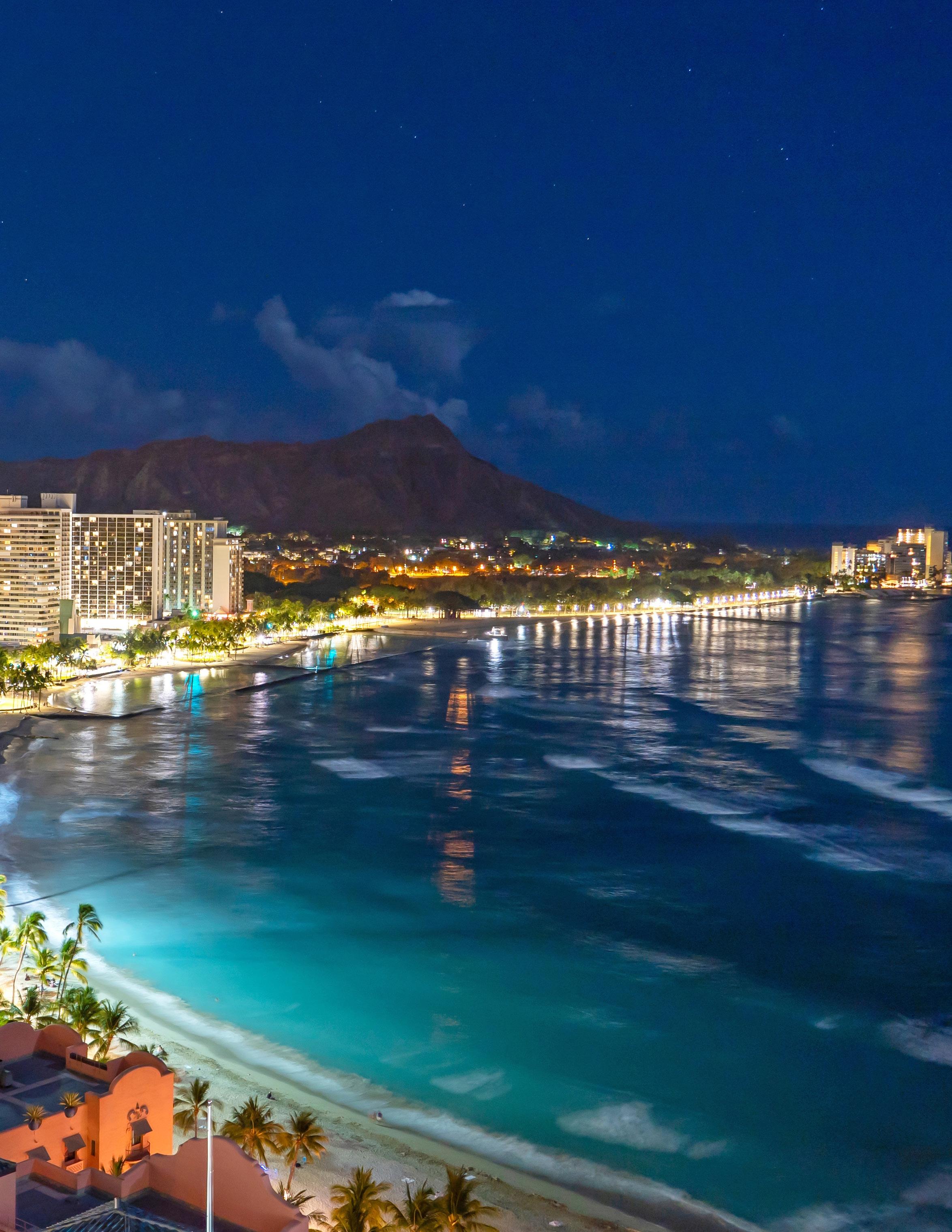
(Percentage of individual employees that identify as)
We are committed to improving gender diversity at Hawai‘i Gas. We recognize that gender diversity helps companies attract and retain talented individuals while also promoting different viewpoints, ideas, and market insights, thereby enabling better problem-solving and ultimately leading to superior performance at the business unit level.
In 2021, the share of female employees at Hawai‘i Gas was 26% compared to 74% of men. This is 4 percentage points above the average estimate of our industry. Of the Executive Leadership Team, 40% are female, those being our CEO and CFO.

74%
26%
Women Men
Established in 2018, WAVE: Hawai‘i Gas’ women’s network is Hawai‘i Gas’ first employee resource group (ERG). It is a forum for female employees to connect, empower, and impact. We do this by joining together to share ideas, collaborate, and learn from each other with the aim of making a meaningful impact in our company, community, and the world around us. We encourage active participation from all employees who would like to be involved. Participation is completely voluntary and 100% volunteer-led.
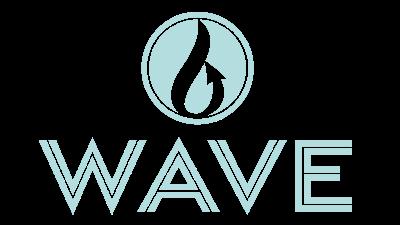
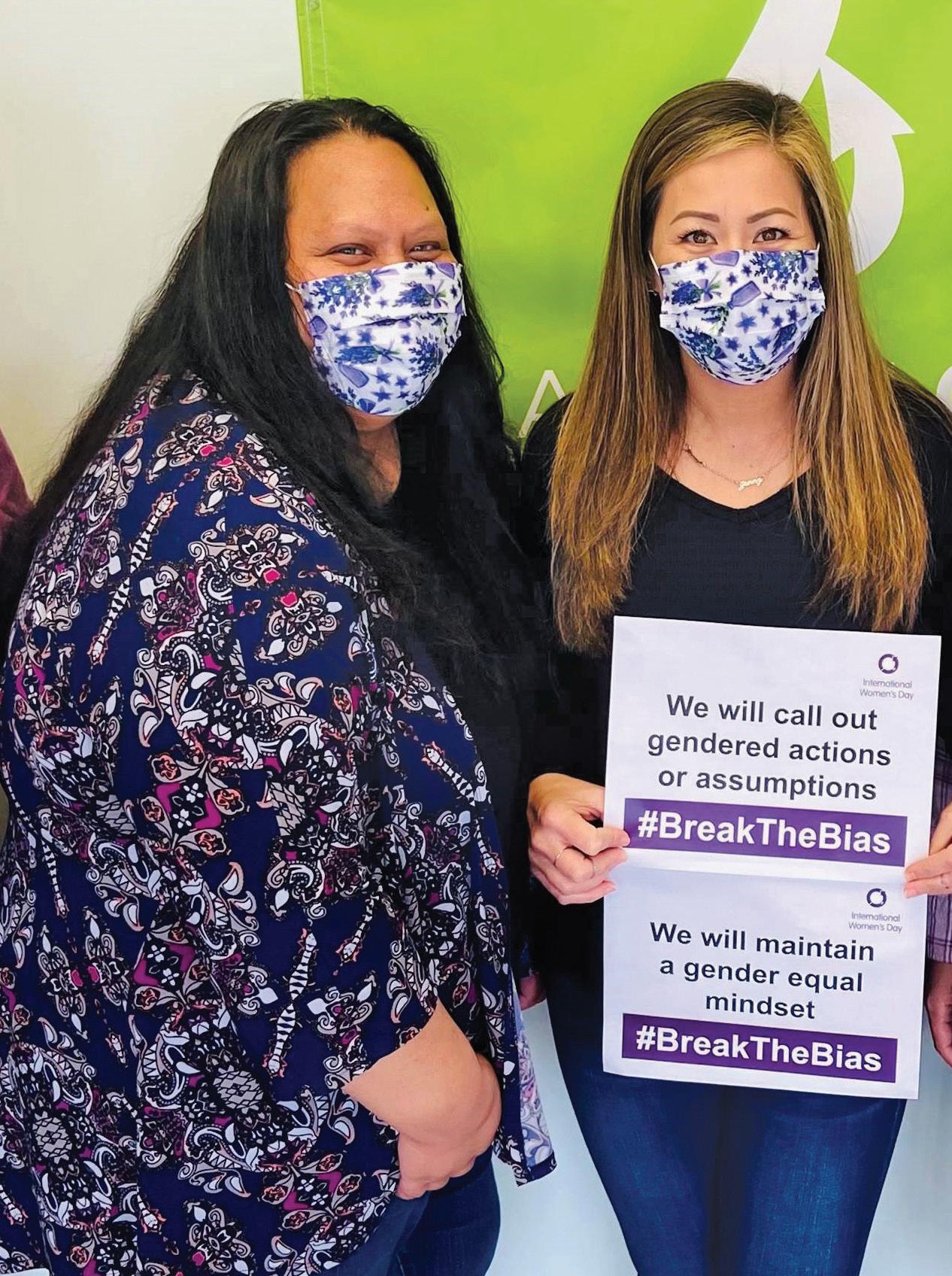
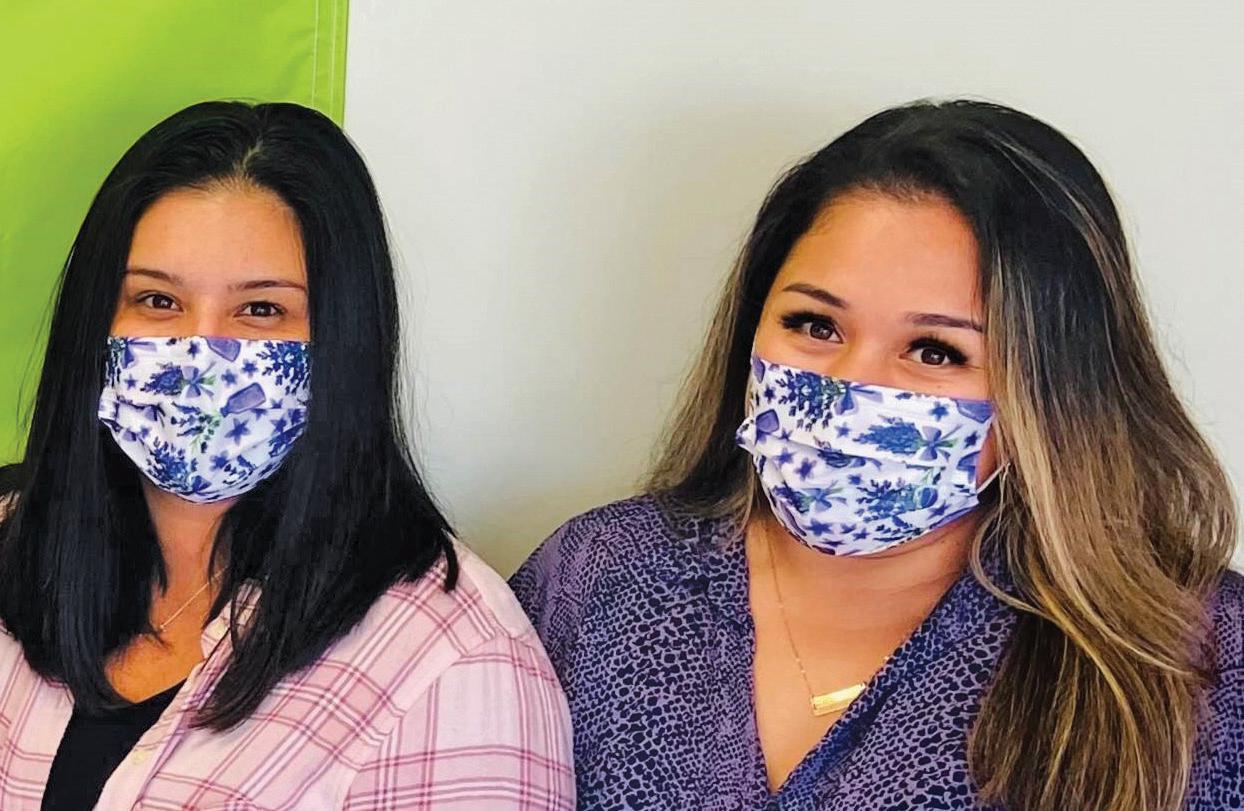
Being in the middle of the Pacific Ocean, the Islands have a rich history of migration which resulted in Hawai‘i’s population becoming a blend of many cultures over time. Hawai‘i is a true melting pot with one of the world’s widest variety of races and ethnicities. According to the 2020 census, approximately 40% of Hawai‘i residents are non-white and have a wide range of ethnicities including Pacific Islander, American Indian, Alaskan Native, Asian, Hispanic, Black African, and Black Caribbean.
At Hawai‘i Gas, we promote ethnic diversity so that our people may be representative of the communities they serve. The ethnic makeup of Hawai‘i Gas remained relatively stable between 2020 and 2021. The largest group was composed of employees of Asian descent, followed by those of two or more races, and then Native Hawaiians or Pacific Islanders.
Asian
Black/African American
Hawaiian/Pacific Islander
Hispanic/Latino
Two or more races
White (Non-Hispanic)
Hawai‘i Gas believes engaging employees is essential to an organization's long-term success. We prioritize employee engagement because we recognize companies that support their employees are more likely to have better retention rates and increased productivity. In 2021, Hawai‘i Gas implemented an annual engagement survey to begin tracking employee engagement and identifying areas of opportunities and improvement in which we can improve employee engagement such as managing change, communications, and career development. We had a 75% response rate with 80% of respondents indicating that they
are proud to work at Hawai‘i Gas. A majority of the employees indicated that:
• I believe a diverse and inclusive workforce positively impacts business performance.
• I find my job interesting and challenging.
• I am provided with adequate safety training for my position.
• This organization strives to maintain a safe work environment.


Our employee community engagement program is designed to encourage employee involvement in our communities. Several causes are important to our employees, our families, and the community at large. As a company, coming together to support these causes can be an opportunity for positive employee engagement to enhance morale, corporate pride, and civic responsibility. As an example, Hawai‘i Gas has fostered a deep partnership with the Special Olympics Summer Games.
“This has been a company tradition in which employees volunteer to organize, coach/ guide athletes, and present awards. Hawai‘i Gas has supported this event for over 30 years with a significant amount of time and resources set aside to plan and participate in the event.”
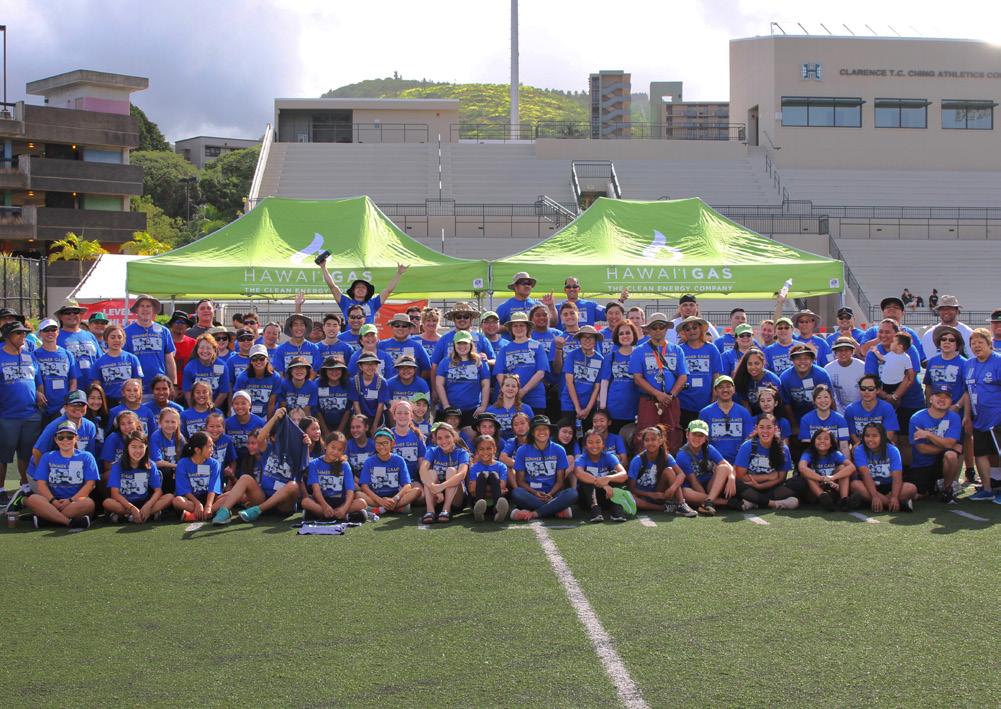

Employee matching, in-kind, and volunteerism are designed to support our employees in causes that personally matter to them and align with the company’s culture, as well as foster diversity, equity, and inclusion. The company will match 100% of employee donations up to a maximum of $500 per year per employee with a minimum qualifying donation of $50 per employee.
Hawai‘i Gas has a charitable contribution program called Kōkua Giving. The focus of the program is to promote community outreach and responsible corporate citizenship, which aligns with our company’s culture and fosters diversity, equity, and inclusion in the communities in which we work and live. Kōkua Giving allows us to give back and invest in our communities through philanthropic support and commercial partnerships with a wide range of organizations.
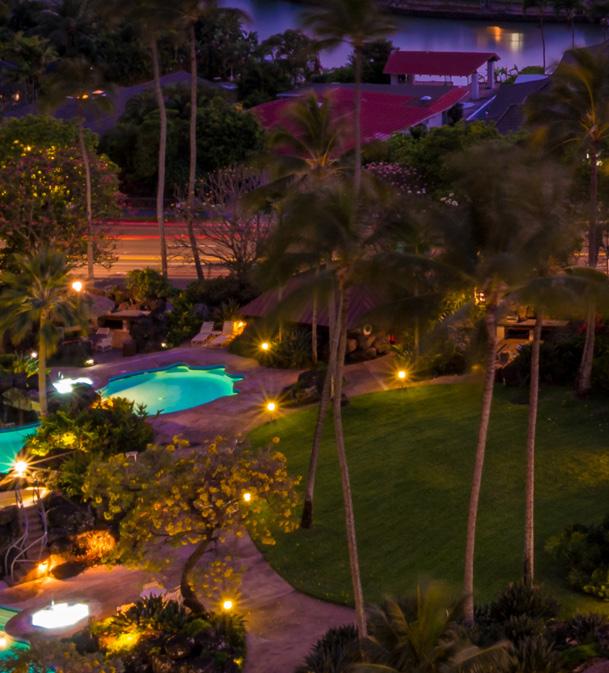


We are a key partner in the innovative Kahauiki Village on O‘ahu, which provides more than 140 permanent, affordable one and two-bedroom homes for houseless families with keiki. Our Islands have one of the highest rates of homelessness in the U.S. and Kahauiki Village directly addresses a growing concern for our communities by helping families to regain stability and break the cycle of poverty and homelessness.
Alongside representatives from the state’s other major energy-sector players, we designed a comprehensive and resilient energy package to ensure residents have affordable, environmentally friendly, reliable, and safe energy. Kahauiki Village has multiple energy sources. Each house has solar thermal for hot water, a backup natural gas water heater, and natural gas for cooking. This mix of energy sources provides resiliency for the community to ensure they have reliable energy even through natural emergencies and energy sources grid outages.

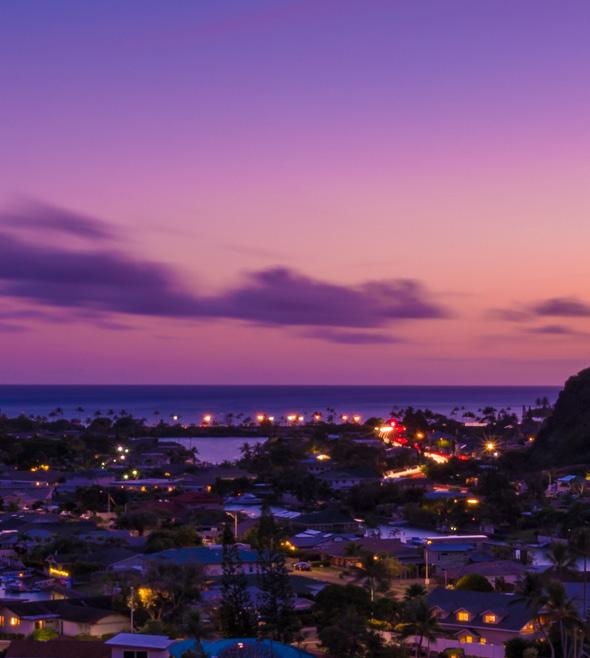


The annual Localicious® Art and Video contest, organized by Hawai‘i Agricultural Foundation (HAF), highlights the importance of local farmers, ranchers, and fishermen to our Islands. We sponsor this competition, which encourages school students to submit pieces of art or 30-second videos on promoting agriculture and farming.
The contest is an extension of Localicious® Hawai‘i, a statewide public awareness campaign that promotes restaurants that source locally-grown, caught, or raised products. All proceeds of the competition support HAF’s school programs to encourage a wider understanding of Hawai‘i’s agricultural industry. During the 2020-2021 school year, HAF reached more than 5,000 school students at 132 public schools statewide.

The best way for us to measure our performance in this regard is by relying on what customers have to say about our teams and our services. We survey our customers on a regular basis and regularly celebrate employees who have been praised by our customers. This ensures we listen closely to the people we serve while also learning from each other and supporting our teams.
Mahalo to Rayson Sakoda, Tank Truck Driver from the Hilo Office, for your awesome customer service. The office received a call from a customer who said, “Rayson was so helpful and wonderful.” They went on to share that he provided excellent service and wanted us to know how much they appreciated his efforts.
The LPG Kūhela team specifically was mentioned in a lovely customer note:
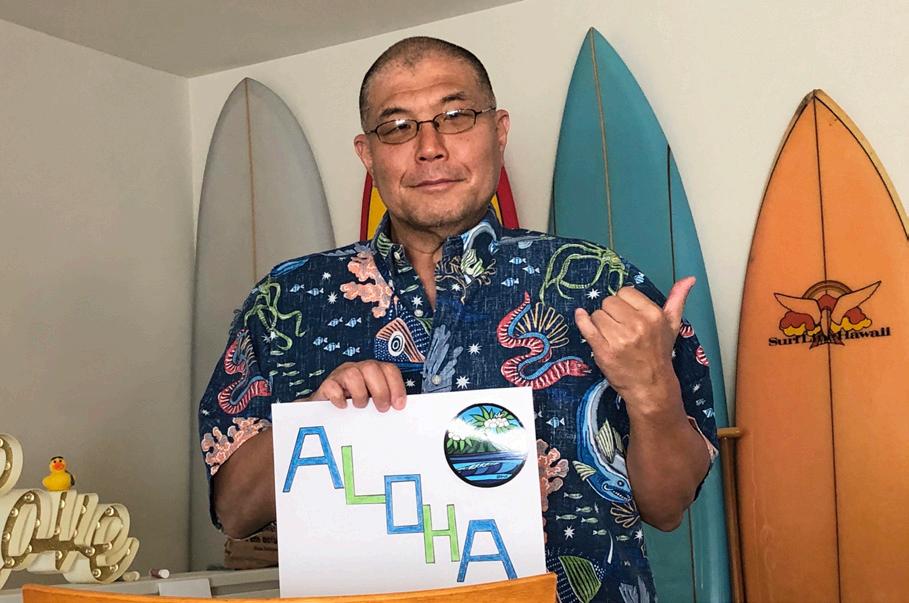
“Laurie, Kainoa, and Lono — Mahalo plenty for such excellent service! Laurie politely answered all my concerns with patience. Then Kainoa and Lono got the old tank out quickly. I'm stoked to be with you guys (Hawai‘i Gas).”
Our utility business is regulated by the Public Utilities Commission (PUC). We report publicly to the PUC on material incidents related to clients/customers, contractors, the community/public, employees, regulators/public authorities, special interest groups, and suppliers and we are held accountable to our customers.
We also communicate on these topics with our employees via an internal communications process and newsletters. In 2021, we also reported on any material misconduct, penalties, incidents, and accidents to our parent company at that time.
In 2021, prior to Argo's ownership, the Hawai‘i Gas Board of Directors had three local external directors and four internal directors and includes our President and CEO, Alicia Moy.
Under Argo’s ownership, we will continue to have three local external directors, and internal directors from Argo.
Hawai‘i Gas’ President and CEO, Alicia Moy, is responsible for the implementation of the strategy and business affairs of the company under the direction of the Board of Directors. Alicia's an experienced executive and her bio is available at www.hawaiigas.com
Material areas such as audit, risk, and compensation are reviewed and approved by Argo.
Conflicts of interest are managed and mitigated under the Code of Business Conduct which addresses issues such as corruption, bribery, and fraud.
The Board’s remuneration is dependent on competitive benchmarking, while that of senior executives is dependent on financial performance and the achievement of quantitative and qualitative metrics, like safety, ESG, and DE+I.
The ESG senior decision maker, for both ESG and climate-related risks and opportunities, is part of the Board of Directors. The senior management of Hawai‘i Gas and its operating businesses have ESG-related and DE+I-related KPIs as part of their compensation plans.

We take Environmental and Social Responsibility very seriously at Hawai‘i Gas and have a broad range of safety policies and procedures that all employees are required to follow. We have Emergency Management and Incident Management plans that lay out detailed procedures to be followed if an event occurs. We exercise environmental responsibility to protect natural resources and social responsibility to manage the impact of our operations on communities, customers, employees, and investors, and to protect property belonging to our customers that have been entrusted to our care.
We exercise OH&S responsibility by managing health and safety risks that could impact employees who work in our facilities or who deliver our products and services to our customers, as well as customers
or other individuals who are visiting our facilities. We conduct due diligence before making new investments, and manage environmental, social, and OH&S risks during construction and operation of our facilities.
We have environmental and waste management policies designed to minimize environmental impacts and have put in place an environmental management system that consists of environmental standards and permits, which is administered by our EH&S department. At our Synthetic Natural Gas (SNG) plant, we use reclaimed and recycled water and track water usage and the management of hazardous waste, which we dispose of using specialist contractors.

We developed specific EH&S policies and training to cover a wide range of work activities and tasks, including at our SNG Plant operations, our pipeline and tank operations, and our commercial driving fleet. Employees receive monthly training on a range of topics, as well as specialized safety and environmental training relating to the specific jobs they do. All incidents are thoroughly investigated, with findings, root causes, and corrective actions shared across the organization. We utilize proactive safety measures to mitigate hazards and prevent incidents from occurring so that each employee goes home safely each day.
Examples of task-specific safety training include:
LEAD: Any employee who may be occupationally exposed to lead will be informed regarding the most important safety concerns and procedures related to lead exposure. Each employee who is subject to exposure to lead at or above the Action Level, or for whom the possibility of skin or eye irritation exists, will participate in an annual training program.
ASBESTOS: The Environmental, Health & Safety Manager serves as the Asbestos Program Manager for all Hawai‘i Gas operations. The Asbestos Program Manager, or their designated representative, coordinates and approves all work activities related to asbestos containing materials (ACM) including:
• Ensuring that employees are trained to identify and report any ACM that has deteriorated in a manner that may result in fiber release.

• Being knowledgeable about practices and procedures for asbestos management and maintaining an appropriate level of training.
Our Operations departments work collaboratively with our EH&S department to facilitate an effective safety program designed to mitigate risk and prevent incidents and injuries from occurring. The Executive Leadership Team leads in safety by regularly communicating with employees that safety is a core value at Hawai‘i Gas.
Safety Leaders are employees who support Operational Unit Managers to implement our EH&S Management System within their area of responsibility.
Safety Leaders are accountable for specific safety responsibilities based on operational needs and associated safety risks. These responsibilities may be delegated or shared, but the ultimate accountability remains with the Safety Leader to:

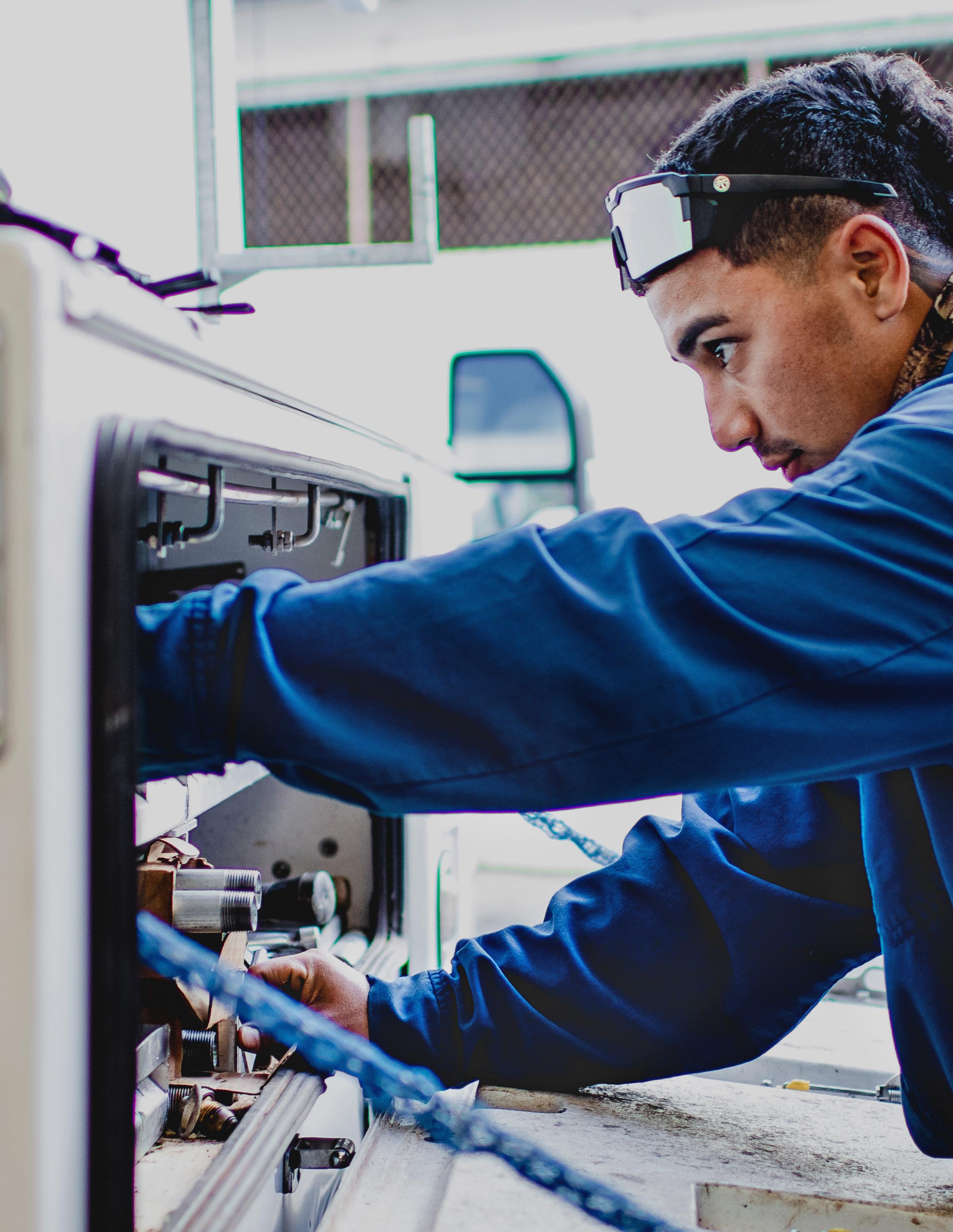
• Follow all EH&S procedures and act as a role model.
• Advise, question, and warn Hawai‘i Gas employees about EH&S matters.
• Develop appropriate technical expertise in EH&S issues at their facility.
• Ensure all EH&S issues brought to their attention by employees are resolved or elevated to management/ or the EH&S team as appropriate.
• Communicate company and unit-wide EH&S priorities, targets, changes, etc. to all employees in their unit.
Safety Leaders receive regular training to improve their EH&S knowledge and technical skills. They take part in monthly update conference calls and quarterly meetings.
To prevent utility pipeline damage, Hawai‘i Gas joined the Hawai‘i One Call Program in 2012. The program assists contractors or other people to identify the approximate location of buried gas lines so that it is not accidentally damaged. 811 is the national call-before-you-dig phone number.
In 2021, Hawai‘i Gas received and responded to 8,532 One Call tickets. This is a proactive way to help minimize damage to utility lines and the potential for gas leaks.
Our Kīnā‘ole values continue to guide our actions, behaviors, and the way we treat each other as Hawai‘i Gas ‘ohana, In addition to our commitment to Kīnā‘ole, we follow the Code of Business Conduct, which sets out our commitment to safe, ethical, and legally compliant business practices and outlines the values that should guide employees. Every year we refresh and recommit to our ethical duties and professional responsibilities. We place a high priority on ethics and compliance as the basis for sound business decisions and behaviors that are vital to our corporate culture, values, and financial performance.
In 2021, all Hawai‘i Gas employees had to complete the annual Code of Business Conduct online training to ensure they understood and agreed to comply with the rules, laws, and regulations associated with our business, thereby fostering an environment of integrity, mutual respect, and awareness. Under Argo ownership, Hawai‘i Gas has developed its own standalone Code of Business Conduct with similar provisions, which all employees will be trained on by the end of 2022.
When employees sign their acknowledgment of the Code of Business Conduct, they confirm their obligation to report possible violations of policy or law. They have the right and a responsibility to speak up.
Employees may express concerns by raising any issues with their supervisor or a more senior manager.
If employees do not feel comfortable with any of these options, they may also report a concern or ask a question confidentially, even anonymously if they choose, through the Employee Hotline. When
They may also seek advice from experts in the Compliance, Human Resources, Finance, or General Counsel’s office.
We prohibit retaliation against anyone who reports a concern, asks a question in good faith, or assists in an investigation of an ethics or compliance issue.
they call or email the Employee Hotline, they reach an independent company where their questions or concerns are recorded. Under Argo’s ownership, we have a similar hotline.
Hawai‘i Gas supports the UNGC Anti-Corruption principles. We combat corruption in all its forms, including extortion and bribery, and maintain high standards of ethical and legally compliant behavior in all business activities.
Our Anti-Corruption Policy prohibits the payment or acceptance of bribes and enshrines our commitment to comply with all applicable local, state, and federal laws. It requires us to avoid even the appearance of improper behavior and to act in good faith, free from conflicts of interest, and to protect Hawai‘i Gas’ assets and reputation. Our policy makes us personally accountable and does not excuse misconduct because it is directed or requested by someone else. It requires us to raise concerns about possible
violations of law or policy and prohibits retaliation against anyone for speaking up in good faith.
Our current actions align with the UNGC principles on anti-corruption:
“Within our Code of Business Conduct, we have a specific policy on Anti-Corruption which sets forth prohibitions on the payment or acceptance of bribes, and our commitment to comply with all applicable local, state, and federal laws. Hawai‘i Gas ensures that each report is supported and resolved and that the person who submits the concern receives a response."
Joanne Barradas, Chief Financial OfficerThe protection of confidential, sensitive, and proprietary information is critically important for our business. Therefore, it is essential that all employees take steps to appropriately safeguard such information.
Our Information Technology Policy defines the rules, regulations, and guidelines for proper usage and maintenance of technological assets to ensure their ethical and acceptable use, and assure the safety and security of data, products, and network infrastructure.
Our IT Policy commits us to comply with relevant laws, regulations, and guidelines and meet requirements for confidentiality, integrity, and availability for employees, customers, and other partners. It requires the implementation of controls to protect personal data, information, and systems against theft, abuse, and other forms of harm or loss. It mandates our
external service providers to comply with our information security needs and requirements and it sets rules for secure remote access to our information systems. A critical aim of our IT Policy is to ensure the availability and reliability of the network infrastructure and services that we provide, even in the event of a major security incident. Furthermore, as technology advances, we review systems, policies and procedures, and update when necessary in anticipation of continued threats.
Hawai‘i Gas organizes regular internal and external cybersecurity audits, vulnerability assessments, and conduct penetration testing of systems. We require employees to undertake annual cyber security training.



We are committed to driving the positive transformation of Hawai‘i’s energy landscape and supporting the state’s renewable energy and climate goals, while providing diverse, affordable and resilient clean energy solutions.
At the beginning of 2022, the Hawai‘i Public Utilities Commission (HPUC) initiated an Integrated Resource Planning (IRP) proceeding that asked Hawai‘i Gas to provide an action plan to address our long-term planning and strategy as a utility provider in the state. The HPUC also solicited applications and selected a diverse group of local and national stakeholders to serve on an Advisory Group to provide expert advice and recommendations in support of the planning process which will address the following:
How we intend to further State climate policies, including emissions reductions and renewable energy goals, with a focus on increasing the amount of low carbon to negative carbon fuels in our fuel mix — like renewable natural gas and hydrogen — all the while balancing safety, customer affordability, reliability, equity and sustainability of Hawai‘i Gas as a local business that employs over 300 residents who call Hawai‘i their home.
We are collaborating with organizations locally and around the world that share similar goals in furthering energy policy, combating climate change, and adopting of sustainable and socially responsible business practices.


The UN Global Compact is a voluntary initiative based on CEO commitments to implement universal sustainability principles to take steps to support UN goals. The UN Global Compact is comprised of businesses committed to advancing the ten principles of the UN Global Compact, advancing sustainability in their own organizations to drive the implementation of sustainable policies and practices. It provides a universal language for corporate responsibility and provides a framework to guide all businesses regardless of size, complexity, or location.
Led by the UN Global Compact in partnership with Accenture and SAP, and with 3M as Patron Sponsor, SDG Ambition supports participating companies of the UN Global Compact to develop and implement innovative business strategies that significantly increase their positive impact on the SDGs. Through the Global Compact Local Networks in 60+ countries, participating companies will assess current performance, identify risk areas, discover opportunities across business units and functions and take business action toward achieving the SDGs.
RNG Coalition is a member-led non-profit organization dedicated to the sustainable advancement of (RNG) as a clean, green, alternative, and domestic energy resource — and as a key component and partial solution to addressing global climate change. RNG Coalition advocates for sustainable development, deployment, and utilization of renewable natural gas so that present and future generations will have access to domestic, renewable, clean fuel and energy. Hawai‘i Gas is a participant on the coalition's Leadership Advisory Boards (LABs) which bring together RNG Coalition member representatives to provide expertise, insight and critical input to advance RNG Coalition’s mission and further the achievement of our SMART Initiative.
Sustainable Business Forum is a group of Hawai‘i business executives who are committed to triple bottom line outcomes, building community resilience, and advancing the Aloha+ Challenge. The Aloha+ Challenge is a statewide cross-sector commitment that brings together diverse partners to develop community-based 2030 goals and measurable targets across six priority areas: clean energy transformation; local agriculture; natural resource management; solid waste reduction; green workforce and green education; and smart sustainable communities.
Hawai‘i Gas participated in the carbon offset initiative which was led by The Nature Conservancy of Hawai‘i (TNC) to help bring a carbon offset pilot project to market.
SBF members partnered with The Nature Conservancy (TNC) Hawai’i to support the Kona Hema Offset Project, a PES project on Hawai‘i Island. The project was accepted into the American Carbon Registry and identified several best practices for carbon offsets in Hawai’i, including data collection and analysis.
As part of the SBF, Hawai‘i Gas is part of the Hawai‘i Green Growth, Local 2030 Hub which is Hawai‘i’s first statewide Voluntary Local Review to assess progress to date and provide 2020 benchmark data to inform decision-making, including on economic recovery, through the Aloha+ Challenge — Hawai‘i’s framework to achieve the UN Sustainable Development Goals.
The Sustainable Development Goals (SDGs) were adopted by the United Nations in 2015 as a universal call to action to end poverty, protect the planet, and ensure that by 2030 all people enjoy peace and prosperity. There are 17 SDGs that each focus on one area of development that together contribute to social, economic, and environmental sustainability.


As part of our sustainability strategy, Hawai‘i Gas focuses on six of the most relevant SDGs:
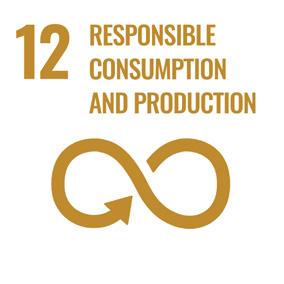

We aim to ensure access to affordable, reliable, sustainable and modern energy for all through our activities.
We aim to build resilient infrastructure in our state, promote inclusive and sustainable industrialization and foster innovation particularly in the areas of RNG and hydrogen.

We aim to make cities more inclusive, safe, resilient and sustainable for our local communities.

We aim to ensure sustainable consumption and production by diversifying our fuel stock to include more renewable sources of energy.
We aim to take meaningful action to combat climate change and its impacts around the world and on our Island home of Hawai‘i.
We aim to protect, restore and promote sustainable use of terrestrial ecosystems and combat biodiversity loss across Hawai‘i.
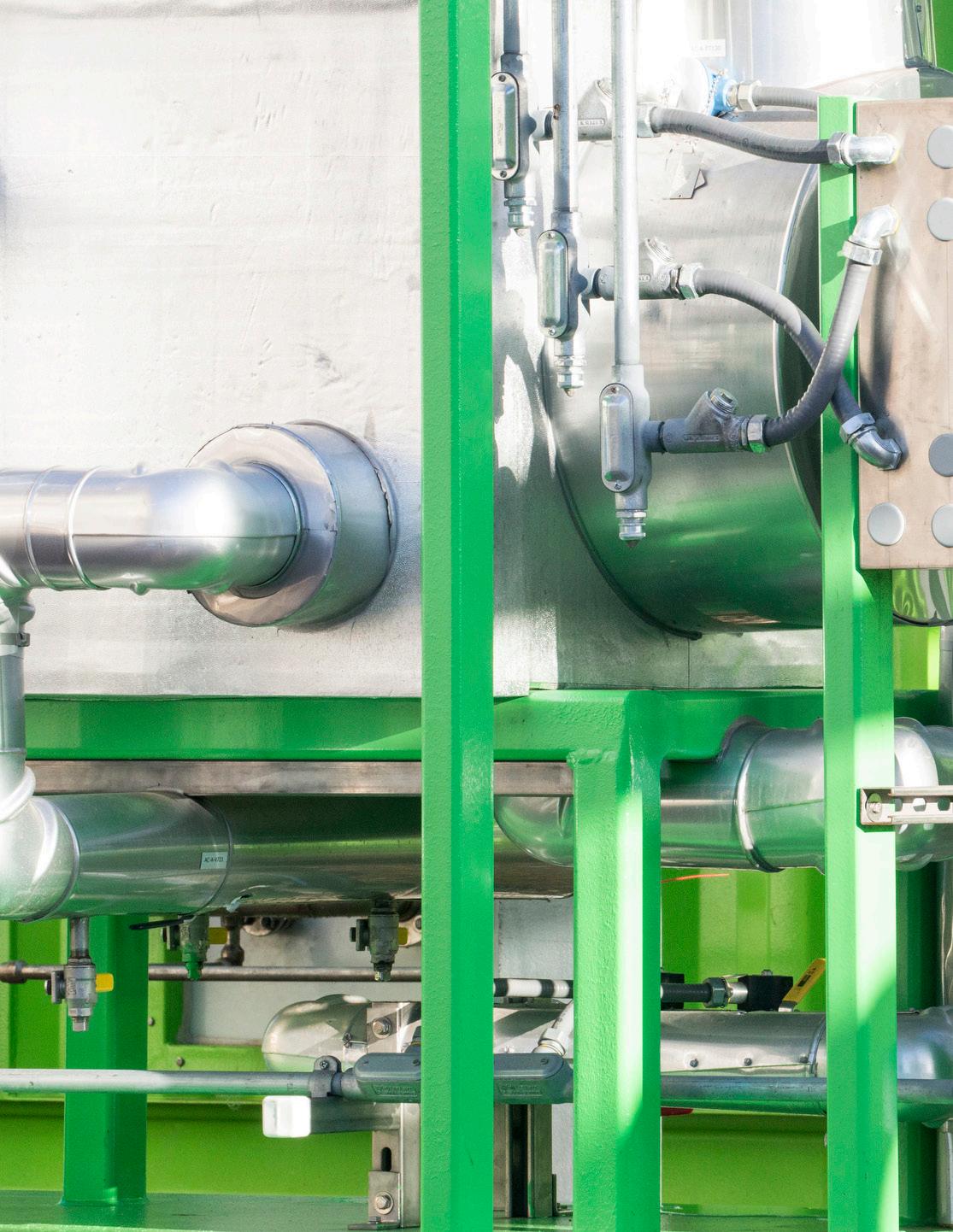
Legal name
Nature of ownership and legal form
Who We Are
Who We Are
Location of its headquarters Back Page
Countries of operation
List all its entities included in its sustainability reporting
Specify the reporting period for, and the frequency of, its sustainability reporting

Activities, value chain and other business relationships
Employees
Workers who are not employees
Governance structure and composition
Nomination and selection of the highest governance body
Conflicts of interest
Communication of critical concerns
Collective knowledge of the highest governance body
Evaluation of the performance of the highest governance body
Remuneration policies
Process to determine remuneration
Approach to stakeholder engagement
Collective bargaining agreements
Financial implications and other risks and opportunities due to climate change
Direct (Scope 1) GHG emissions
Reduction of GHG emissions
Nitrogen oxides (NOx), sulfur oxides (SOx), and other significant air emissions
Worker participation, consultation, and communication on occupational health and safety
Diversity of governance bodies and employees
Operations with local community engagement, impact assessments, and development programs
Who We Serve
About This Report
About This Report
Who We Are
Company Highlights 2021
Who We Serve
Policies and Governance
Policies and Governance
Anti-corruption
Code of Business Conduct
Policies and Governance
Policies and Governance
Policies and Governance
Policies and Governance
Stakeholder Engagement
Company Highlights 2021
Who We Serve
GHG Reduction Actions and Goals
GHG Reduction Actions and Goals
GHG Reduction Actions and Goals
Health and Safety
Diversity, Equity and Inclusion
Diversity, Equity and Inclusion
